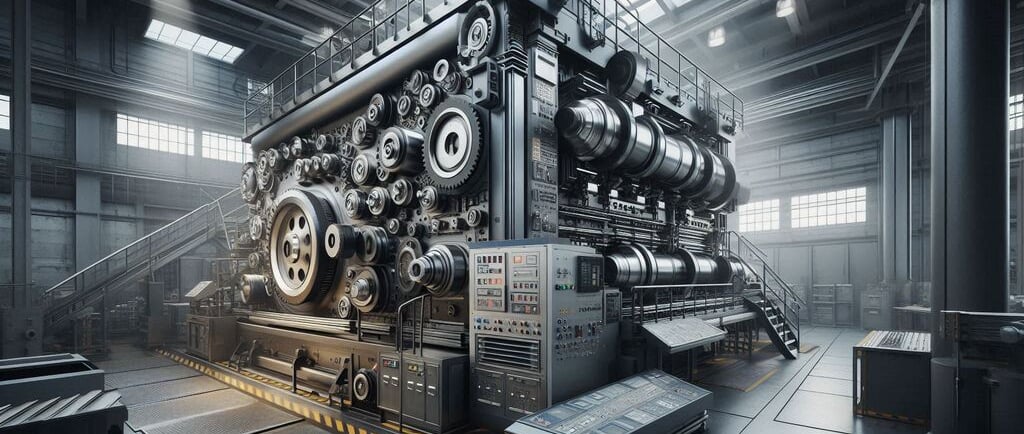Let us collaborate to foster global growth and development together.
Industrial Machinery & Equipment
Explore the world of industrial machinery & equipment. Discover essential tools, selection tips, and insights to optimize operations in various industries.
11/16/20073 min read


Explore the world of industrial machinery & equipment. Discover essential tools, selection tips, and insights to optimize operations in various industries.
Industrial Machinery & Equipment: Essential Insights for Efficient Operations
Whether you're in manufacturing, construction, or logistics, industrial machinery and equipment are the backbone of your operations. From streamlining production to enhancing safety and efficiency, these tools play a pivotal role in helping industries meet their goals.
But how do you choose the right equipment? What innovations are shaping the industry? This comprehensive guide on industrial machinery & equipment answers all your questions and offers actionable advice to boost productivity.
What is Industrial Machinery & Equipment?
Industrial machinery and equipment encompass tools, machines, and systems used across industries to perform specific tasks efficiently. These can range from heavy-duty manufacturing systems to precise tools for quality control.
Key Examples of Industrial Equipment
Machinery: CNC machines, conveyors, forklifts, and more.
Tools: Measuring instruments, welding machines, and hand tools.
Automation Systems: Robotics and IoT-enabled equipment designed for smarter operations.
Why It Matters
Investing in the right equipment enhances efficiency, ensures safety, and delivers consistent results.
Essential Types of Industrial Machinery
1. Manufacturing Machines
These include CNC (Computer Numerical Control) systems, milling machines, and presses that shape raw materials into finished goods.
Key Benefits: Improved precision, reduced waste, and faster production cycles.
Example: A CNC lathe machine can produce complex shapes with minimal operator intervention.
2. Material Handling Equipment
Equipment like forklifts, conveyors, and pallet jacks streamline the transportation of materials within a facility.
Efficiency Tip: Automated guided vehicles (AGVs) can handle repetitive tasks, freeing up staff for more complex activities.
3. Packaging and Labeling Machines
Used in industries like food and pharmaceuticals, these machines ensure products are safely packaged and appropriately labeled.
Added Value: Saves time and ensures compliance with regulatory requirements.
How to Choose the Right Industrial Equipment
Evaluate Your Operational Needs
Understanding your specific requirements is the first step in selecting equipment that delivers value.
Questions to Ask:
What tasks need automation?
What level of precision is required?
Are there space constraints in your facility?
Consider Cost vs. Value
Opt for machinery that offers a good balance of upfront cost and long-term operational efficiency. While initial investment matters, consider:
Maintenance costs.
Energy efficiency.
Longevity and resale value.
Prioritize Quality and Certifications
Always purchase equipment that adheres to industry standards, such as ISO certifications, to ensure reliability and safety.
Latest Trends in Industrial Machinery
1. Automation and AI Integration
Industrial machinery is becoming smarter with AI, enabling predictive maintenance, real-time monitoring, and process optimization.
Example: Smart conveyors can adjust their speed based on the flow of materials to prevent bottlenecks.
2. Sustainability in Equipment Design
Eco-friendly machinery focuses on energy efficiency and reduced waste, catering to businesses aiming to meet sustainability goals.
3. IoT-Enabled Systems
The Internet of Things (IoT) allows interconnected machinery to communicate seamlessly, improving efficiency and minimizing downtime.
Maintenance: Maximizing the Lifespan of Equipment
Regular Inspections
Conducting frequent checks ensures potential issues are addressed before they escalate.
Checklist:
Inspect belts, hoses, and connections.
Monitor operating temperatures and vibrations.
Ensure proper lubrication.
Staff Training
Equip your team with the necessary knowledge to operate and maintain machinery effectively.
Pro Tip: Many equipment manufacturers provide training sessions. Take advantage of these.
Partnering with Reliable Service Providers
Work with certified technicians to handle repairs and replacements efficiently.
Benefits of Investing in Advanced Industrial Equipment
Enhanced Efficiency: Automation reduces time and manual effort, resulting in faster production.
Improved Safety: Equipment designed with safety features minimizes workplace risks.
Scalability: High-capacity machines allow businesses to meet growing demands.
Conclusion: The Right Machinery Drives Success
Investing in the right industrial machinery & equipment isn’t just about improving operations—it’s about setting your business up for success. By staying informed about trends, carefully evaluating your needs, and maintaining your tools, you can ensure seamless operations and long-term growth.
Looking to learn more? Check out “Top 5 Innovations in Industrial Automation” or share your thoughts in the comments below. We’d love to hear about the tools that have transformed your business!
Innovation
Cutting-edge solutions for industrial efficiency and productivity.
© 2024. All rights reserved.


